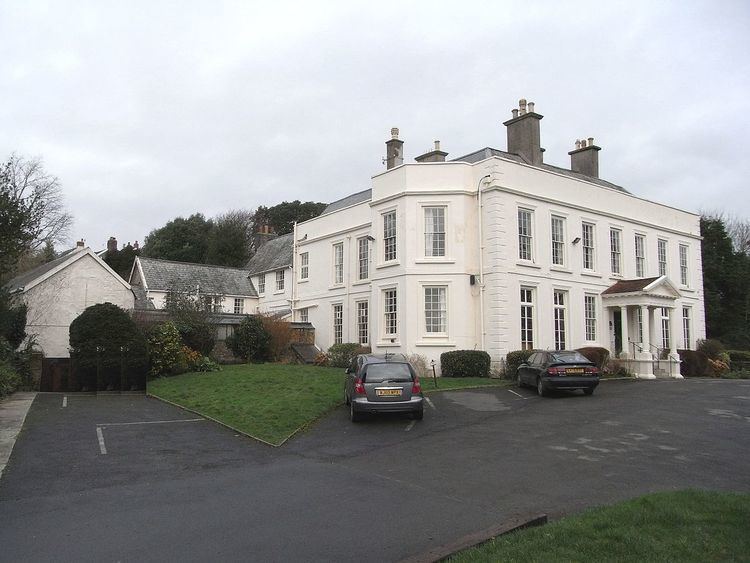Phone +44 1271 342188 | Architectural style Georgian architecture | |
 | ||
Similar Orleigh Court, Stevenstone, Castle Hill - Filleigh, Watermouth Castle, Arlington Court | ||
Pilton House in the parish of Pilton, near Barnstaple, North Devon, Ex31, is an historic grade II listed Georgian mansion house built in 1746 by Robert Incledon (1676-1758), twice Mayor of Barnstaple, who was from nearby Braunton. It is situated almost in the centre of the ancient town of Pilton, but had formerly extensive grounds covering at least 20 acres, which extended down "Pilton Lawn", now built over, to the River Yeo. It later served as the residence for various Members of Parliament for Barnstaple, for which it was well suited being only a 10-minute walk from the centre of that town, yet in a secluded situation with extensive grounds, and sufficiently large and grand for entertaining borough officials and electors.
Contents
History
No records detailing the history of the site of Pilton House before the 18th century survives on available title deeds. It is believed to occupy the site of the demolished mediaeval Pilton Priory. Reed (1985) states that the site was part of the Pilton Priory lands purchased following the Dissolution of the Monasteries by George Rolle (d.1552) of Stevenstone, founder of the influential and wealthy Rolle family, and quickly re-sold by him in 1545 piecemeal and at a profit.
Incledon
Whyte
"Capital mansion house, offices, coach-house, stabling, lawn, pleasure grounds, gardens, conservatory, fountain and plantations with lodge entrance in Pilton Street, containing approximately 20 acres"
He sold at the same time Westaway House and farm, comprising 42 acres and 40 houses, cottages and gardens with the public house "The Priory Arms", fishing rights in the River Yeo and various other lands amounting to about 137 acres.
Fraser
The next owner was Sir William Fraser, 4th Baronet (1826-1898), a politician, author and book collector. He was elected Member of Parliament for Barnstaple (Devon) in 1852 (later unseated following a public enquiry into bribery), and again in 1857, and for Ludlow (Shropshire) in 1863 and for Kidderminster (Warwickshire) in 1894. In 1859 there existed a public house on Pilton Street named after him "The Fraser Arms".
Williams/Basset
In 1880 Pilton House was the residence of Charles Henry Williams (later known as Charles Henry Basset, from 1880) (1834-1908) also of Westaway House, Pilton, where he operated a model cattle farm, and of Watermouth Castle all in North Devon. He was a naval and military officer, JP and Deputy Lieutenant for Devon, and was Conservative Party Member of Parliament for Barnstaple, 1868–1874. He was master of the Devon and Somerset Staghounds between 1887 and 1893. He provided much assistance in establishing the Barnstaple Staghounds, for which purpose he provided Pilton House as occasional accommodation for hounds and hunt staff when hunting in the vicinity.
Chichester
Major General Hugh Chichester (1836-1896), JP, of the Royal Bengal Artillery, was the occupant in 1893. The ancient and prominent Chichester family was originally seated at the manor of Raleigh, adjoining Pilton Priory on the north-east, in the parish of Pilton, and later split into various branches within North Devon. He was the 4th son of Robert Chichester (born 1804), of nearby Hall in the parish of Bishops Tawton, Devon. Hugh's great-grandmother was Amy Incledon (d.1782), eldest daughter of the builder of Pilton House, and wife of Charles Chichester (1723-1798) of Hall. Moreover, Hugh's grandfather, Amy's eldest son Charles Chichester (1750-1835), had married into the family of Webber, which had inherited Buckland House, the seat of the then extinct senior branch of the Incledon family. Hugh's first son Walter died an infant, his second son Lionel Chichester (1873-1902) was killed at the age of 29 in the Boer War and his third son Cecil Chichester (born 1875), a captain in the Royal Navy, resided in 1937 at Marston Manor, Marston Magna, Somerset.
Retirement Home
In 1948 the estate was acquired by the Barnstaple Old People's Housing Association and continues in that use in 2014.
